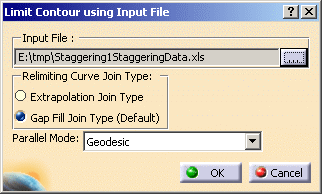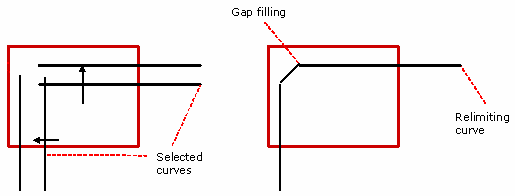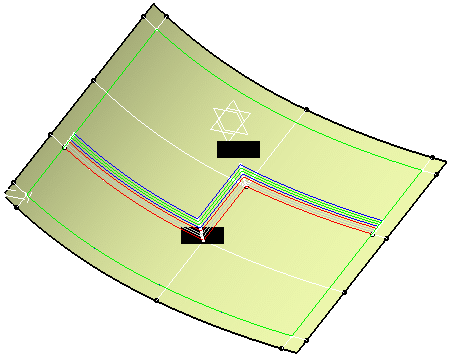![]()
The staggering data file contains:
- the staggering values,
- the staggering steps
- and the relimiting directions for each ETBS that will be used when relimiting the plies.
These
values are usually modified by the user from the file generated when
creating plies from zones,
selecting the option
Create
Full Plies and ETBS.
Please note that if you add a new
column (or a row) to the staggering data file (.xls file), the corresponding
first column (row) cell should not be left empty. i.e. you should add # to
the first column cell or the first row cell.
In the example below, we have added column L, M and N and written # in the
first cell of those columns.

-
Click the Plies From Zones icon
 .
. -
In the Plies Creation dialog box, click to select Create Full Plies and ETBS.
-
Click OK to create the ETBS.


-
Click the Limit Contours from Input File icon
 .
.
The Limit Contour dialog box is displayed.

-
Select the type of Relimiting Curve Join.

The relimiting curve is defined by curves joining each other in two ways: - extrapolation, then relimitation

or - gap filling

- extrapolation, then relimitation
-
The limit contour created is a parallel to the curve you have selected.
You can select the type of parallel that will be created:

Geodesic and Euclidian impose the type you have selected.
Geodesic otherwise Euclidian will create a geodesic parallel if possible,
otherwise it will create an Euclidian parallel.
Euclidian otherwise Geodesic will create an Euclidian parallel if possible,
otherwise it will create a geodesic parallel.
Parallel planes otherwise geodesic will create an parallel planes if possible, otherwise it will create a geodesic parallel. -
Click OK to relimit the plies.

Relimitation by gap filling 
Relimitation by extrapolation
![]()